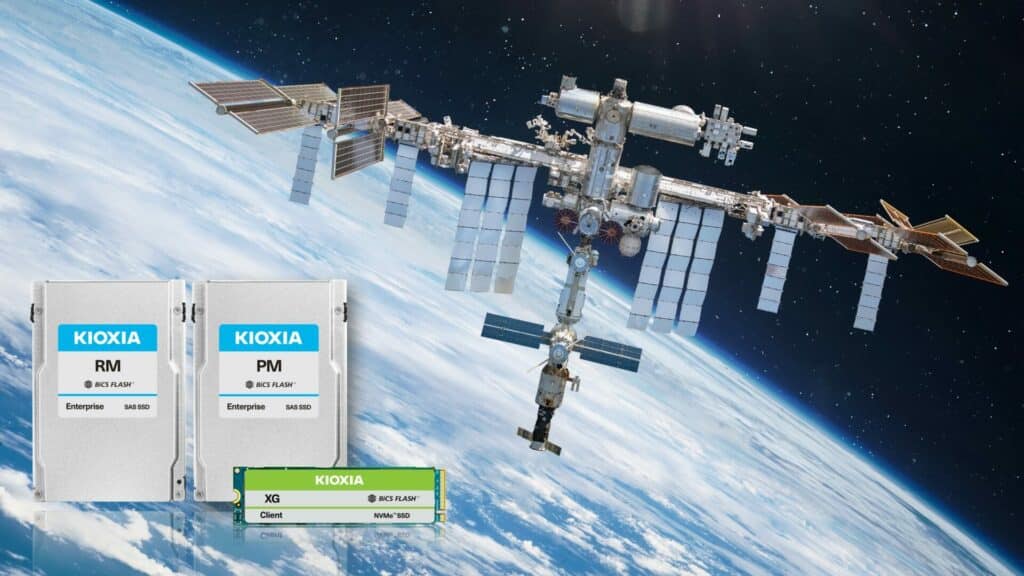KIOXIA has announced that their SSDs were aboard the NG-20 rocket, a critical mission delivering the updated HPE Spaceborne Computer-2 to the International Space Station (ISS). The HPE Spaceborne Computer-2 is an impressive assembly based on HPE EdgeLine and ProLiant servers. It utilizes KIOXIA SSDs to provide robust flash storage, essential for conducting various scientific experiments in space.
The HPE Spaceborne Computer-2 incorporates commercial off-the-shelf technology to offer edge computing and AI capabilities onboard the ISS. This technology plays a crucial role in the ongoing mission to enhance computing power in space environments. It also significantly reduces the dependency on ground communications, which is vital for space exploration continuing to reach new frontiers. The system is designed for high-performance computing (HPC) workloads and capable of real-time image processing, deep learning, and scientific simulations. Its versatility allows it to support a wide range of experiments, from healthcare and natural disaster recovery to 3D printing, 5G, AI, and more.
Specifically, the company has supplied a range of flash memory-based SSDs, including the KIOXIA RM Series value SAS, PM6 Series enterprise SAS, and XG Series NVMe SSDs. These SSDs will help enable the advancements expected from this mission. With eight 1,024GB NVMe and four 960GB value SAS SSDs, coupled with four enterprise SAS SSDs, each boasting a capacity of 30.72TB, the total data storage surpasses 130TB. This marks the largest amount of data storage ever sent to the ISS on a single mission.
Solid-state technology has no moving parts, thus making them more suitable for the challenging conditions of outer space. They are also less susceptible to electromagnetic waves and offer much faster performance than HDDs, which is crucial for the demanding requirements of space missions. KIOXIA will monitor the health of these SSDs daily, with log files transmitted from the ISS. This monitoring will provide valuable insights into the performance of flash memory storage in the harsh space environment.
KIOXIA RM7, XG8 and PM6 Quick Specs
The KIOXIA RM7 Series Value SAS SSDs are notable for their 12 b/s SAS interface, capacity options ranging from 960GB to 7.68TB, and durability features such as 1 DWPD (Drive Writes Per Day). These SSDs can deliver sequential read and write performance, with speeds up to 1,100MB/s and 1,050MB/s, respectively, while random read and write performance is up to 190,000 IOPS and 55,000 IOPS, respectively.
The XG8 series is quoted to deliver up to 7GB/s in sequential reads while potentially hitting up to 5.8GB/s in sequential writes. For random performance, the XG8 is expected to reach 900K IOPS read and 620K IOPS write. KIOXIA also upped the capacity to 4TB in the XG8, and they now use the 5th generation BiCS FLASH. The KIOXIA PM6 Series is highlighted by 96-layer BiCS FLASH 3D TLC flash memory and is quoted to deliver sequential read performance up to 4.3GB/s or 4,101MiB/s.





 Amazon
Amazon